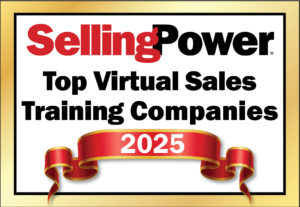The Ultimate Digital Sales Engagement Guide

With a growing conviction that digital is the wave of the future, B2B businesses are moving online faster than ever – adapting to digital selling. Gartner estimates that by 2025, 80% of B2B sales interactions will occur in digital channels.
Sales engagement is the interaction between salespeople and buyers. These interactions can include anything from sales calls and meetings to email click-through rates and even downloading an ebook. Sales engagement can be measured and, when you measure, you will gain insights into how the buyer interacts with your brand throughout the buyers’ journey. Engagement insights are useful when improving the quality and efficiency of the sales process.
SALES ENGAGEMENT VS. SALES ENABLEMENT
Even though sales enablement and sales engagement complement one another – and both enable the sales team to engage effectively with prospects and customers – each has a different focus area.
Sales enablement helps businesses align their sales process internally with other departments, while sales engagement is more about helping sales professionals reach, engage, and communicate with their prospects and customers.
DIGITAL SALES ENGAGEMENT
Creating personal interaction and engagement between the buyer and seller is a challenge when selling digitally. It can cause an engagement gap, create trust issues, and make it harder to close deals. To improve the digital interactions that will help you increase engagement, it’s important to work with features that keep the personal and human touch alive.
Since the massive shift to online selling, video and live chat have emerged as the top channels for interacting and closing sales with B2B customers. According to McKinsey, video and live chat have emerged as the predominant channels for interacting and closing sales with B2B customers.
- 41% more are using video as digital interaction
- 23% more are using live chat as digital interaction
By analyzing the usage of a sales enablement platform, we can see that documents have an average hit rate of 67% and – when adding engaging communication channels like video, live message, and branded design – the hit rate increased by 30%. We could also see that:
- Documents sent without any SMS, video, automatic chat, and automatic reminders have an average hit rate of 52%.
- Documents sent with SMS, video, automatic chat, and/or automatic reminders correspond to an average hit rate of 68%.
SALES ENGAGEMENT POWER
When you know how to master “it,” B2B sales teams can bring personal and engaging interactions to the online sales process while building trust within the digital environment.
1. How to use video in your sales process to increase sales engagement
Video is the preferred format when it comes to consuming content. Over 1 billion hours are watched on YouTube every day. So, how does that translate into B2B sales?
According to a report published by Forrester, including video in an email leads to a 200-300% increase in click-through rate. And, 90% of users say that seeing a video about a product is helpful in the decision process.
Video fits perfectly into every stage of the sales process. Video allows you to cut through the noise by sending a quick intro. It’s eye-catching and you’re able to show the prospect there’s an actual human behind the email. With video, you are able to quickly clear any potential confusion around a specific question or terms with the proposal that might have been hard to communicate over an email.
Using video as part of your sales process will help you stand out from your competition and create sales engagement with your prospects and customers. A video can be used in many different ways throughout the sales process:
- Send a video greeting to increase the engagement when connecting with prospects.
- Use video when inviting for a meeting.
- Send a video and introduce the agenda for the meeting.
- Send a video to recap a meeting.
- Add a personal video greeting when presenting proposals and sending out agreements.
2. How to use chatbots or live chat in your sales process to increase sales engagement
Chatbots and live chat are virtual customer services that give representatives and salespeople the opportunity to communicate with people via instant messaging. But, how to use them in your sales process to increase sales engagement?
These types of sales engagement features can be used throughout the sales process – from lead generation to building client relationships and answering FAQs. Lead-qualifying chatbots and live chats have proven to be an asset to each stage of the sales process.
- Awareness: At this stage, establishing a relationship is crucial to moving the prospect through the sales funnel. Deployed either on your Website or through social media channels, a chatbot can initiate a conversation – causing the visitor to engage with the brand.
- Interest: Your chatbot might suggest products or services based on previously visited pages and the customer’s needs. It can handle many of the preliminary questions – at least the most frequently asked ones. If it’s familiar with the query, it will provide the answer. If not, it will connect the customer to a sales representative.
- Decision: At this stage, your chatbot can send the lead additional advertisements and information based on past conversations. By collecting valuable data, you may pre-qualify leads and save the company time and resources.
- Action: After a sale is complete, your chatbot can schedule follow-ups based on the stored data. This information can then be used in retargeting the user – creating a loyal customer. There are different tools you can use for this, such as Intercom, Zendesk support suite, or Freshdesk.
3. How to increase sales engagement using your sales collateral
Effective branding will differentiate you from your competitors, and doing this will allow you to build a relationship with prospects and your customers. We all know the sales process can’t happen without a document.
Sales collateral is anything that helps sales teams close more deals, faster. Companies develop content with the aim of moving prospective buyers through the entire sales process. Content typically comes in different types targeting every stage of the buyer’s journey, such as product overviews, case studies, ebooks, white papers, FAQs, fact sheets, testimonials, how-to slide decks, proposals, executive summaries, quotes, contracts, and implementation guides.
What matters more than how you define it, however, is how it actually performs and gets your customer engaged.
- Track performance: First things first: Stop sending your sales collateral as email attachments; instead, start tracking them with a document tracking solution that uses a link-based system for sharing. What gets measured gets improved.
- Use storytelling: Buyers like to read examples that demonstrate how someone has done what you’re talking about. They use this experience to gain the trust and confidence to try what you offer. For sales collateral, storytelling typically comes in two forms: case studies and testimonials.
- Make it visually appealing: Studies indicate that our brains process visual information 60,000 times faster than text. If you want your customers to engage with your sales collateral, you better make sure it has an appealing visual design, along with text that clearly communicates details.
- Cater to the Web: Sorry to say this, but sending a PDF is not a digital content strategy anymore. You have to make sure your sales collateral can be viewed anytime, anywhere, from any device. This sounds basic, but it’s extremely important for driving engagement.
- Personalize content: Last, but not least, stop sending those copy-paste proposals. Provide your sales reps with sales enablement platforms to enable more personalized content.
Get our Enewsletter
Get the latest sales leadership insight, strategies, and best practices delivered weekly to your inbox.
Sign up NOW →